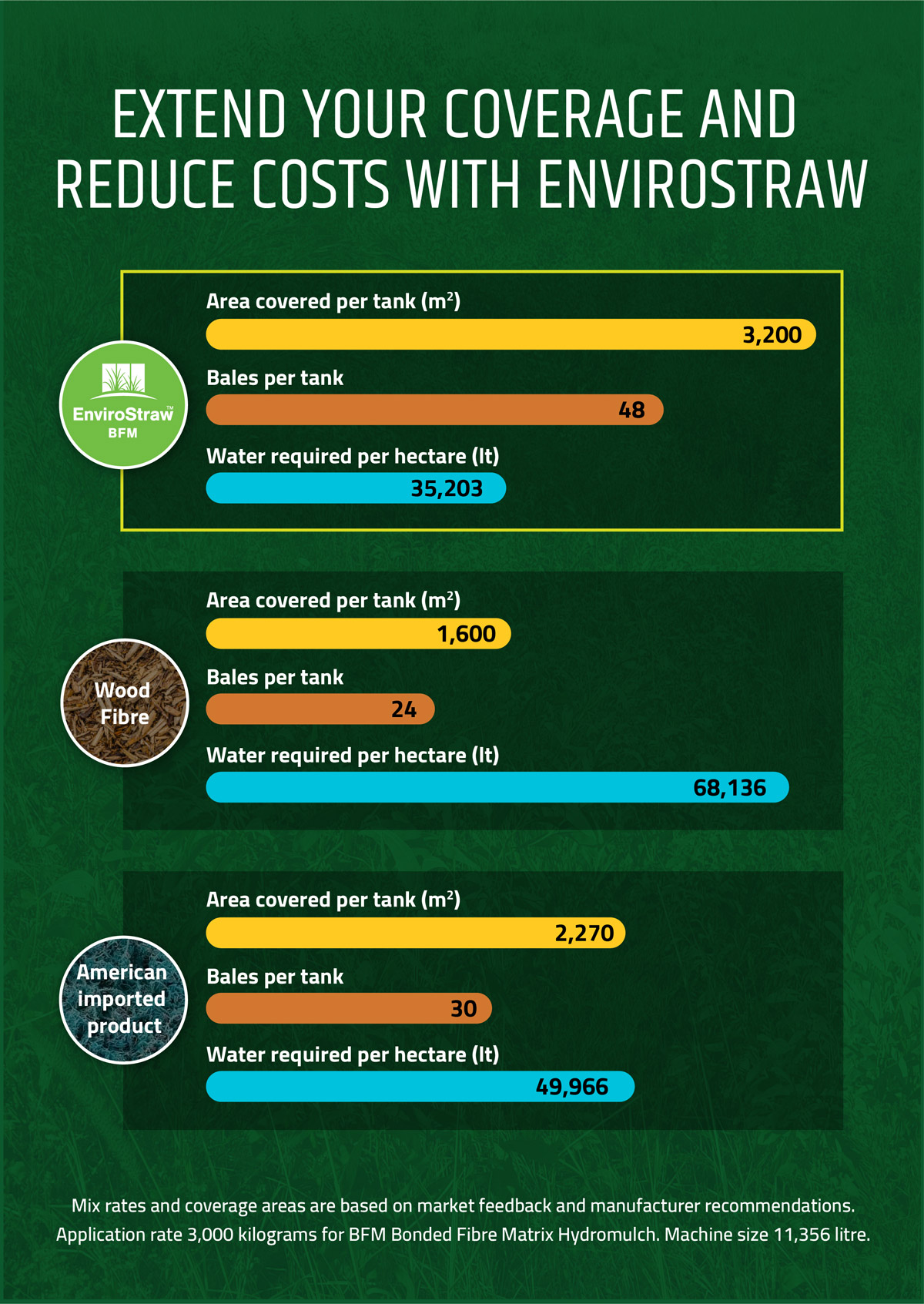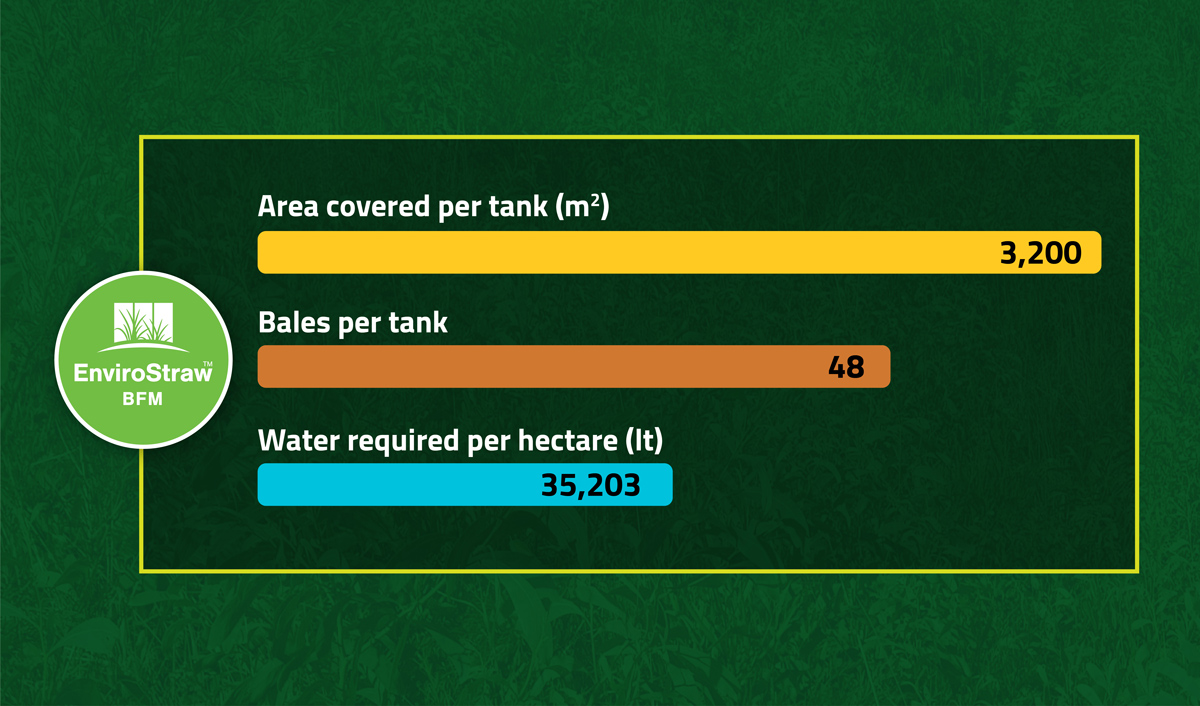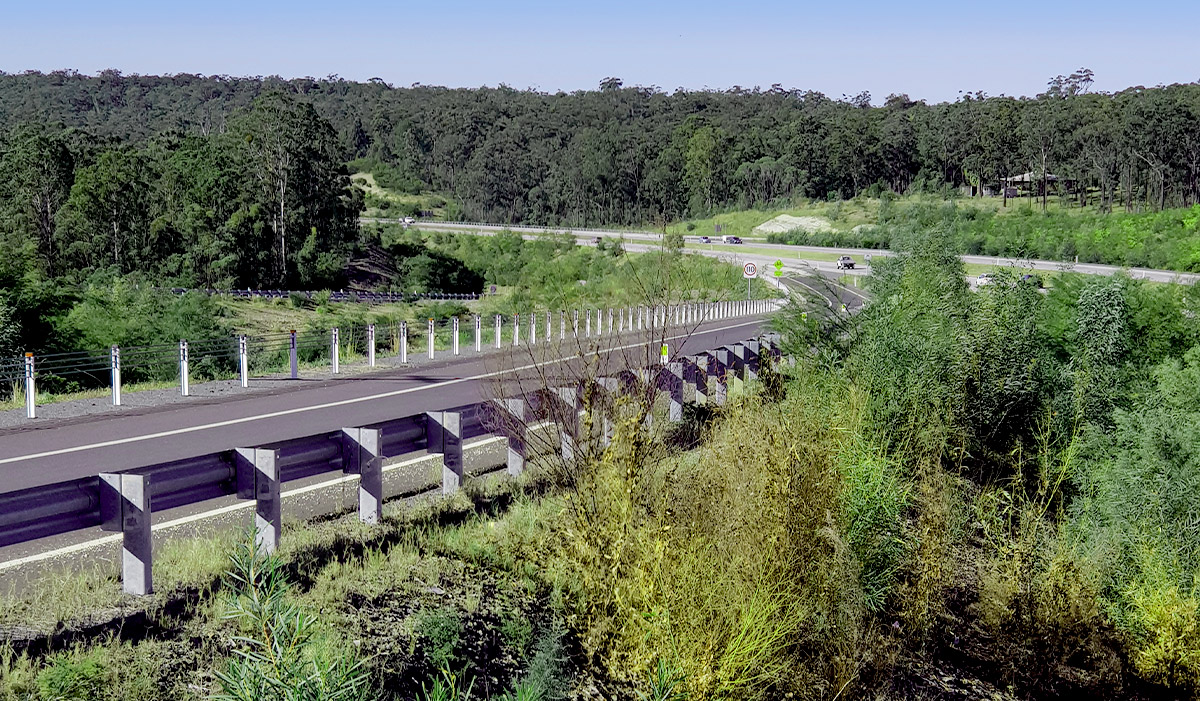In the challenging Australian climate, caring for soil demands significant time, effort, and vast amounts of water—something that is often scarce, particularly during times of drought.
With EnviroStraw’s hydromulch however, you can achieve exceptional results while using up to half the water required by other Hydromulch products, making it a game-changer in the field of hydraulic revegetation.
EnviroStraw’s hydromulch is manufactured from thermally and mechanically processed renewable resources, enhancing its flexibility, water absorption, and ensuring it is free from weed seeds and pathogens. This innovative product delivers advanced water use efficiency, minimising water requirements during both application and subsequent watering programs.
By adopting EnviroStraw, you can significantly reduce the number of water trucks needed for your project, conserving this valuable resource.
To put the water-saving benefits into perspective, let’s consider a project covering 20 hectares.
By using EnviroStraw hydromulch instead of an Australian manufactured or imported wood fibre or sugar cane paper, you can save up to a staggering 720,000 litres of water.
That’s equivalent to 72 x 10,000-litre water carts saved!

Beyond its water-saving advantages, EnviroStraw’s straw-based hydromulch offers numerous benefits for contractors and site owners.
With an extended functional longevity of up to 18 months on-site can be achieved when including our long term polymer EnviroBond, it is more effective in establishing long-term self-sustaining vegetation solutions. Additionally, EnviroStraw covers up to twice the area compared to its competitors, even though the same amount goes into the tank.
This means reduced tank refills, saving you time, money, and minimising CO2 emissions on-site.
Formulated from 100% biodegradable, annually renewable natural fibres, EnviroStraw’s hydromulch provides superior coverage, seed protection, improved soil moisture retention, and unparalleled erosion control. Its thick, viscous slurry ensures exceptional ground coverage, resulting in long-term sustainable outcomes and increased productivity on commercial sites.
Compared to other types of hydromulch, straw-based solutions offer distinct advantages.
Cellulose-based hydromulch, often made from recycled newspaper, and wood fibre hydromulch suffer from high carbon-to-nitrogen ratios, leading to nitrogen drawdown issues. They also require significant water volumes during application, resulting in increased CO2 emissions.
Wood fibre-based hydromulch, on the other hand, takes up to 20 years to grow and necessitates substantial energy for processing.
EnviroStraw’s thermally processed straw grows in 3 months, eliminating weed seeds and other pathogens. This process ensures optimal revegetation outcomes and provides superior functional longevity and thermal properties. As a result, it can negate the need for expensive watering programs, thereby reducing project costs and erosion risks.
Each bag of EnviroStraw hydromulch comes with an advanced suite of microbes, phytonutrients, natural wetting agents, and biostimulants designed to kickstart the process of nature and rebuild disturbed soils, minimising the risk of expensive reworks on your revegetation project.
By using EnviroStraw’s all-in-one hydromulch products, you can achieve more with fewer resources. Reduced labour costs, overall project costs, and enhanced team productivity are just some of the advantages.
With up to 50% more mulch per tank load and 50% greater area coverage, you spend less time filling tanks while achieving the same coverage as your competitors. This frees up valuable time and resources for other crucial aspects of your project.
Furthermore, the inclusion of beneficial microbes, bacteria, fungi, and other microscopic organisms in EnviroStraw’s hydromulch play a vital role in establishing native vegetation and maintaining a healthy soil ecosystem.
They enhance soil fertility, promote soil structure, and contribute to the resilience and longevity of the ecosystem. By creating a bio-diverse environment that thrives even in the face of adversity, such as droughts or floods, EnviroStraw minimises the need for follow-up treatments and prevents soil erosion, greatly reducing your resource requirements.
EnviroStraw’s hydromulch is a groundbreaking solution. With its water-saving properties, extended functional longevity, and unparalleled coverage, it offers a cost-effective, environmentally friendly approach to achieving remarkable results.

